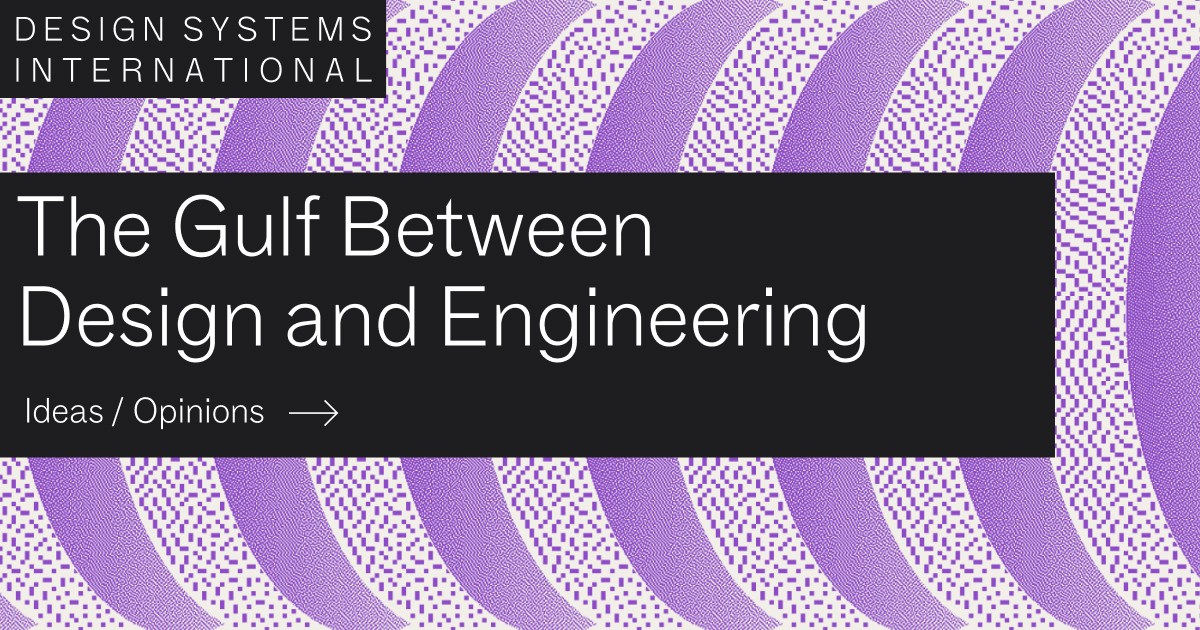Closing the Gap Between Design and Engineering
核心概念
By integrating design and engineering processes, teams can foster a culture that values both disciplines, leading to more efficient workflows and better outcomes. The author argues for a design-driven engineering approach that prioritizes collaboration and shared understanding between designers and engineers.
摘要
In the content, the author discusses the importance of bridging the gap between design and engineering by promoting a collaborative workflow. Emphasizing the need for proper documentation, collaboration, and workflows, the author highlights how this approach can lead to a design-driven engineering culture. By making code the design product, teams can work towards quickly implementing design changes in the codebase while freeing designers from manual tasks to focus on creativity and communication. The content also addresses the question of maintaining duplicated components in both code and design tools, suggesting that as organizations mature in their collaboration workflow, having components available in both realms becomes essential for shared understanding.
The Gulf Between Design and Engineering / Design Systems International
統計資料
"a Figma file is a deliverable"
"time they can instead spend on questioning, ideating, and communicating intent"
"source of truth is in the code"
"having shared pixel perfection across tools"
引述
"By making code the design product, we embrace the ambiguity of our tools and apply them deliberately when needed with a common goal of landing the design changes quickly in the codebase."
"Having a shared vocabulary of what you want to achieve is much more important than having shared pixel perfection across tools."
從以下內容提煉的關鍵洞見
by Rune Madsen 於 11-06-2023
https://designsystems.international/ideas/the-gulf-between-design-and-engineering/
深入探究
How can organizations effectively balance maintaining components in both code and design tools
To effectively balance maintaining components in both code and design tools, organizations should start by establishing a clear understanding that the source of truth lies in the code. This means that updates and changes to components should primarily be made in the codebase, with the design tool components serving as a creative utility rather than the definitive version. In the early stages of collaboration between design and engineering teams, it is often more efficient to update Figma components to match the code when necessary, rather than attempting to keep everything perfectly synced at all times. As the design system matures, organizations can then introduce workflows for bringing component updates into Figma files. By prioritizing a shared vocabulary and understanding of goals over pixel-perfect consistency across tools, organizations can strike a balance that allows for flexibility while ensuring alignment between design and engineering efforts.
What challenges might arise when transitioning to a design-driven engineering culture
Transitioning to a design-driven engineering culture may present several challenges for organizations. One significant challenge is overcoming traditional silos between designers and engineers who are used to working independently or sequentially on projects. Shifting towards a collaborative workflow requires breaking down these barriers and fostering open communication channels where both disciplines can contribute their expertise throughout the entire process. Additionally, there may be resistance from team members accustomed to established ways of working or skeptical about integrating new tools or processes into their workflow. Overcoming these challenges necessitates strong leadership support, clear communication about the benefits of this cultural shift, providing adequate training resources for team members to upskill if needed, and creating an environment where experimentation and learning from failures are encouraged.
How does embracing ambiguity in tools contribute to innovation in collaborative workflows
Embracing ambiguity in tools contributes significantly to innovation in collaborative workflows by allowing teams to focus on outcomes rather than rigid processes or perfect alignment between different software platforms. When teams acknowledge that there may not always be one correct way of doing things or one definitive version of a component across tools, they become more adaptable and open-minded in their approach. This flexibility encourages creativity, experimentation with new ideas, rapid iteration cycles based on feedback loops from users or stakeholders without being constrained by overly strict guidelines or rules set by specific tools.
0
